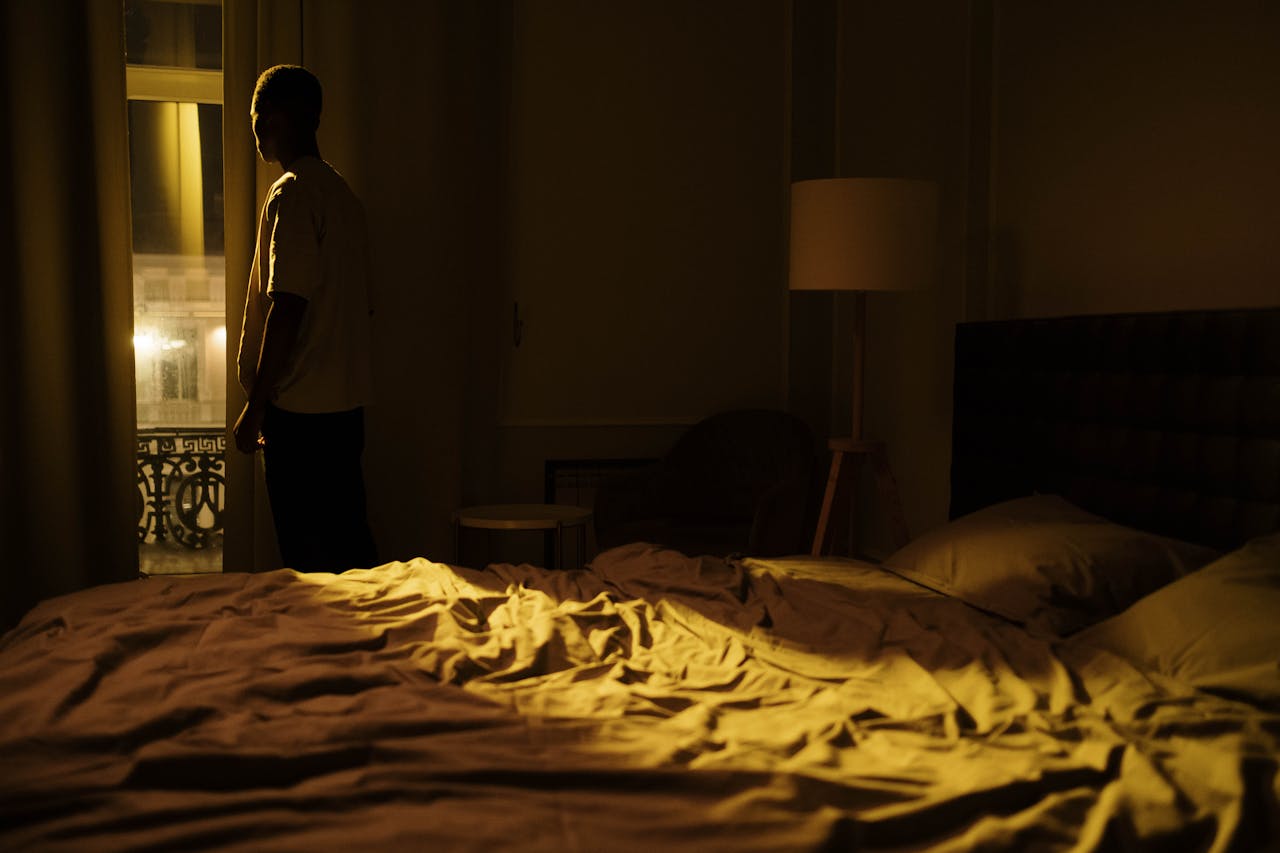Sleep is an essential aspect of human life, offering the body and mind a chance to rest and rejuvenate. However, for some individuals, the sleep process is interrupted by unusual behaviors, such as sleepwalking. Sleepwalking, medically referred to as somnambulism, is a phenomenon where individuals perform complex actions, such as walking, while still in a sleep state. This intriguing yet perplexing condition blurs the line between wakefulness and sleep, creating a unique set of challenges for those affected.
Though it might appear harmless at first glance, sleepwalking poses various risks, ranging from physical injuries to psychological stress. It often leaves individuals and their families searching for answers about its root causes and effective remedies.
Understanding the nature of sleepwalking, its triggers, and its potential dangers is essential for addressing the condition in a safe and informed manner. This blog explores the underlying mechanisms, associated risks, and practical solutions for managing sleepwalking, shedding light on this mysterious sleep disorder.
Understanding Sleepwalking
Sleepwalking typically occurs during the deep stages of non-REM (rapid eye movement) sleep, which is when the body is in its most restful state. During these episodes, individuals may exhibit behaviors ranging from sitting up in bed to walking around or even performing complex activities like unlocking doors. Remarkably, they are often unaware of their actions and have no memory of the episode upon waking.
This condition is more common in children than adults, with many outgrowing it as their sleep patterns mature. However, for some, sleepwalking persists into adulthood or arises later in life, indicating underlying issues. While episodes vary in frequency and intensity, they often disrupt the sleep cycle and can lead to daytime fatigue or irritability.
Exploring the Causes of Sleepwalking
The exact causes of sleepwalking remain unclear, but researchers believe a combination of genetic, environmental, and physiological factors contribute to its occurrence. Genetics play a significant role, as individuals with a family history of sleepwalking are more likely to experience the condition themselves.
Stress and anxiety are also notable triggers, as heightened emotional states can disrupt the natural progression of the sleep cycle. Sleep deprivation, irregular sleep schedules, and certain medications further increase the likelihood of sleepwalking episodes.
Additionally, medical conditions such as fever, restless leg syndrome, or sleep apnea can create disruptions in deep sleep, making individuals more prone to sleepwalking. Understanding these contributing factors is key to identifying effective prevention and management strategies.
The Risks Associated with Sleepwalking
Although sleepwalking is often perceived as a benign condition, it carries significant risks for the individual and others. Physical injuries are among the most immediate concerns, as individuals may stumble, trip, or interact with hazardous objects during episodes. In extreme cases, sleepwalkers have been known to leave their homes, exposing themselves to dangers such as traffic or adverse weather conditions.
The psychological impact of sleepwalking can also be profound. Many individuals experience embarrassment or anxiety due to their lack of control over their actions, which can strain personal relationships and affect mental health. Families or caregivers may also feel a heightened sense of responsibility and stress in trying to protect the individual from harm.
Furthermore, chronic sleepwalking often disrupts the quality of sleep, leading to fatigue, reduced cognitive function, and diminished productivity. Recognizing these risks emphasizes the importance of addressing sleepwalking as a serious medical concern.
Diagnosing Sleepwalking
Diagnosing sleepwalking typically involves a comprehensive evaluation of sleep patterns, lifestyle factors, and medical history. Sleep specialists often rely on patient accounts or observations from family members to understand the frequency and nature of episodes.
In some cases, polysomnography, a detailed overnight sleep study, may be conducted to monitor brain activity, heart rate, and muscle movements. This helps rule out other sleep disorders such as seizures or REM sleep behavior disorder that might mimic sleepwalking symptoms.
Maintaining a sleep diary can also provide valuable insights, helping to identify potential triggers or patterns. A proper diagnosis is crucial for developing an effective treatment plan tailored to the individual’s needs.
Remedies and Management Strategies
Managing sleepwalking requires a multifaceted approach, combining behavioral changes, environmental modifications, and medical interventions when necessary. Creating a safe sleeping environment is a critical first step. Removing sharp objects, locking doors, and installing safety measures such as baby gates can reduce the risk of injury during episodes.
Establishing a consistent sleep routine is equally important. Ensuring adequate rest and minimizing disruptions can help stabilize the sleep cycle, reducing the likelihood of sleepwalking. Relaxation techniques such as mindfulness meditation or deep breathing exercises may also prove beneficial in alleviating stress, a common trigger for the condition.
In cases where sleepwalking persists or poses significant risks, medical interventions such as therapy or medication may be recommended. Cognitive-behavioral therapy (CBT) can help address underlying psychological factors, while certain medications may improve sleep quality and reduce episodes.
The Role of Stress and Lifestyle
Stress plays a pivotal role in triggering and exacerbating sleepwalking, making stress management an essential component of treatment. Incorporating relaxation practices into daily life, such as yoga or progressive muscle relaxation, can promote a calmer mind and improve sleep quality.
Lifestyle adjustments, including reducing caffeine and alcohol intake and avoiding heavy meals before bedtime, can further enhance sleep hygiene. Regular exercise, when performed earlier in the day, supports better overall sleep, minimizing disruptions that may lead to sleepwalking.
Additionally, open communication within families or households can ease the emotional burden of sleepwalking. Sharing responsibilities and creating a supportive environment fosters understanding and cooperation in managing the condition.
When to Seek Professional Help
While occasional sleepwalking may not require medical intervention, frequent or dangerous episodes warrant professional attention. Sleepwalking that persists into adulthood or arises suddenly without a clear cause should be evaluated by a healthcare provider.
Consulting a sleep specialist ensures a thorough assessment of potential underlying conditions, such as sleep apnea or neurological disorders, that may contribute to the behavior. Early intervention not only addresses the immediate risks but also prevents long-term complications associated with chronic sleepwalking.
Seeking help is particularly crucial if sleepwalking episodes disrupt daily life or pose significant safety concerns. Professional guidance provides individuals and their families with the tools and strategies necessary for effective management.

